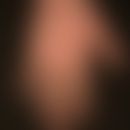Synonym(s)
DefinitionThis section has been translated automatically.
Cutis laxa refers to a heterogeneous group of hereditary diseases whose main symptom is characterized by sagging, inelastic skin (in contrast to Marfan syndrome and Ehlers-Danlos syndrome). These cutaneous characteristics are almost always due to loss, fragmentation or severe disorganization of the elastic fibres. The systemic significance of this disorder of elastogenesis affects various organ systems. In addition to the skin, the lungs, blood vessels and joints are particularly affected.
The hereditary forms of cutis laxa are caused by mutations in various genes (e.g. PYCR1, LTBP4, ATP6V0A2, etc.) that are functionally involved in the formation, degradation or organization of elastic fibres. In principle, autosomal dominant and autosomal recessive forms can be distinguished, irrespective of the gene system. When considering the differential diagnosis of the clinical phenomenon "cutis laxa" or better "cutis laxa-like skin changes", further hereditary as well as acquired clinical pictures must be taken into account. The clinical spectrum of autosomal recessive cutis laxa is very heterogeneous in terms of organ involvement and severity. Autosomal recessive RIN2-related cutis laxa is an extremely rare, localized form of cutis laxa.
EtiopathogenesisThis section has been translated automatically.
The gene RIN2 (Ras And Rab Interactor 2), is located on chromosome 20p11.23 and is involved in endosome transport (Aslanger AD et al. 2014).
You might also be interested in
ClinicThis section has been translated automatically.
The cardinal symptoms of RIN2-related cutis laxa include macrocephaly, partial or total alopecia and cutis laxa (Basel-Vanagaite L et al. 2009). The symptoms of cutis laxa are mild with (mostly) localized infestation of the facial skin. The skin of some affected infants was dry, scaly and thickened.
Additional symptoms are hyperextensibility of the joints, moderate to severe scoliosis, gingival hyperplasia, retrognathia, malpositioned teeth, an outwardly twisted or rolled, everted lower lip and lid edema. Occasionally, bronchiectasis, aortic dilatation and generalized osteoporosis have been described as part of the syndrome, as well as mild mental retardation.
Note(s)This section has been translated automatically.
Since the disorder has so far occurred in only a few people, the complete clinical picture with its symptoms is still largely unknown.
LiteratureThis section has been translated automatically.
- Aslanger AD et al (2014) Newly described clinical features in two siblings with MACS syndrome and a novel mutation in RIN2 Am J Med Genet 164A: 484-489
- Basel-Vanagaite L et al (2009) RIN2 deficiency results in macrocephaly, alopecia, cutis laxa, and scoliosis: MACS syndrome.Am J Hum Genet 85: 254-263
- Syx D et al (2010) The RIN2 syndrome: a new autosomal recessive connective tissue disorder caused by deficiency of Ras and Rab interactor 2 (RIN2).Hum Genet 128: 79-88
- Verloes A et al (2005) A new recessive connective tissue disorder with fleshy swelling of lips, lid and cheeks, macrocephaly, hyperextensible skin and severe scoliosis. (Abstract) 55th Annual Meeting, American Society of Human Genetics, Salt Lake City, Utah p. 140.
Incoming links (1)
Rin2 gene;Outgoing links (1)
Rin2 gene;Disclaimer
Please ask your physician for a reliable diagnosis. This website is only meant as a reference.




